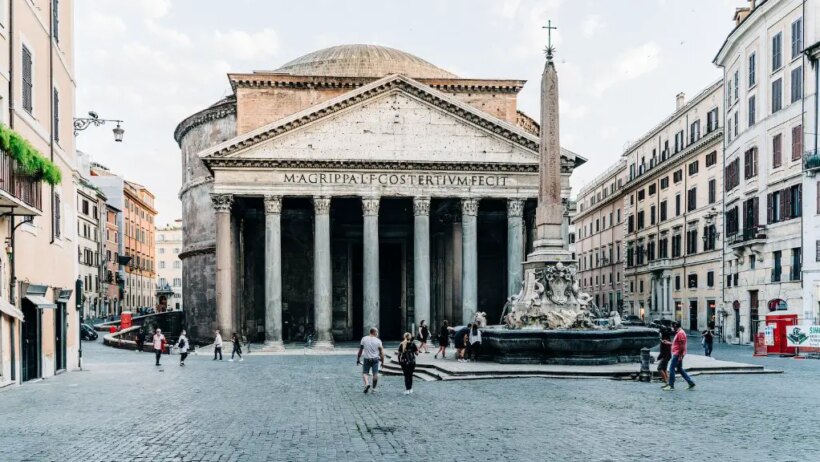Rome, often regarded as the eternal city, stands as a bridge between ancient history and modern civilization. Its climate, much like its architectural wonders, is a tapestry woven from the threads of time and nature, creating a unique environment that has captivated humankind for millennia. The interplay between ancient stones and Mediterranean air forms a backdrop that not only defines the city’s ecology but also shapes the lives of its residents.
The climate of Rome can be classified as a Mediterranean climate (Csa), characterized by hot, dry summers and mild, wet winters. This climate is not merely a backdrop; it influences the very rhythm of life in Rome. The summer sun is relentless, casting a golden hue over the ancient ruins and modern buildings alike. The temperature often soars above 30 degrees Celsius (86 degrees Fahrenheit) during the peak of summer, while the lush greenery of the parks becomes a refuge for both locals and visitors seeking respite from the heat. The atmosphere is rich with the intoxicating scents of blooming bougainvillea and the earthy aroma of sun-baked terracotta.
Winter brings a different charm to Rome, as the temperature dips to a more palatable range of 3 to 15 degrees Celsius (37 to 59 degrees Fahrenheit). While snow is a rare visitor, the occasional frost blankets the rooftops of ancient structures, creating a picturesque scene that seems to belong to postcard representations of the city. The cool, damp weather of the winter months rejuvenates the landscape, surfacing the vibrant greens of the cypress trees and the olive groves that punctuate the surrounding hills.
In examining the climate, one must consider the role of the Tiber River, which winds its way through the heart of the city. Acting as both a lifeline and a climate moderator, the river’s waters contribute to the humidity levels, particularly during spring and autumn. This rejuvenating humidity fosters a sort of equilibrium, allowing the warm air of summer to blend harmoniously with the cooler breezes of the river’s currents. Here lies a metaphorical juxtaposition—ancient stones, which have withstood the ravages of time, paired with the fluidity of Mediterranean air that nurtures life.
Furthermore, it is essential to understand how historical architecture has been influenced by and adapted to Rome’s climate. The ancient Romans employed savvy architectural techniques to combat the harsh weather conditions. Tall ceilings, thick walls, and strategically placed windows facilitated natural ventilation, allowing cool breezes to circulate during the relentless heat. The famed Roman aqueducts, a marvel of engineering, also played a pivotal role in maintaining the city’s water supply, which was crucial for hygiene and agriculture in a predominantly dry environment.
Yet, as time moves on, the climate is evolving. Urbanization has led to the phenomenon of the urban heat island effect, where concrete and asphalt absorb and retain heat, raising nighttime temperatures and potentially altering the local climate. This transformation raises questions about sustainability and the balance between preserving Rome’s historical essence and addressing contemporary environmental challenges. The echoes of the past in stone may soon be juxtaposed with the fragility of a changing climate.
Mitigating climate impacts demands awareness and action. Efforts to promote sustainability in Rome are sprouting through initiatives aimed at increasing green spaces and promoting renewable energy sources. Projects targeting the preservation of historical sites while enhancing environmental resilience stand as a testament to the city’s understanding of its duality—a custodian of history and a participant in modernity.
Moreover, the agriculture surrounding Rome is intimately tied to its climate. The fertile lands produce a bounty of crops, from luscious tomatoes to olives and grapes. The Mediterranean climate serves to enhance the flavors of these produce, creating a gastronomic legacy that resonates through the streets of Rome. The vibrant markets brim with fresh offerings that tantalize the senses and illustrate the symbiosis between the climate and local cuisine. Here, the sun’s powerful rays contribute to cultivating not just crops but culinary traditions that have thrived for generations.
As we gaze upon the ancient structures, the Pantheon, the Colosseum, and the Foro Romano, we are reminded of their resilience against the temperamental play of the elements. They stand as monuments not that merely witnessed history, but are integral to the dialogue about climate. Indeed, the architects and builders of ancient Rome had a foresight that many modern cities are now scrambling to adopt. They understood the intrinsic relationship between environment and design, establishing a paradigm that still holds relevance today.
In conclusion, the climate of Rome is not an isolated phenomenon but a complex interplay of natural forces, historical significance, and contemporary challenges. The ancient stones speak of resilience, while the Mediterranean air whispers of urgency—a call to action for all who cherish our planet. The confluence of these elements creates a unique appeal that not only enchants the heart of visitors but also reminds its inhabitants of their duty toward preservation. As they walk amidst the remnants of a glorious past, the Roman citizens must also gaze forward, ensuring that their eternal city’s legacy endures amidst the changing tides of climate and time.








